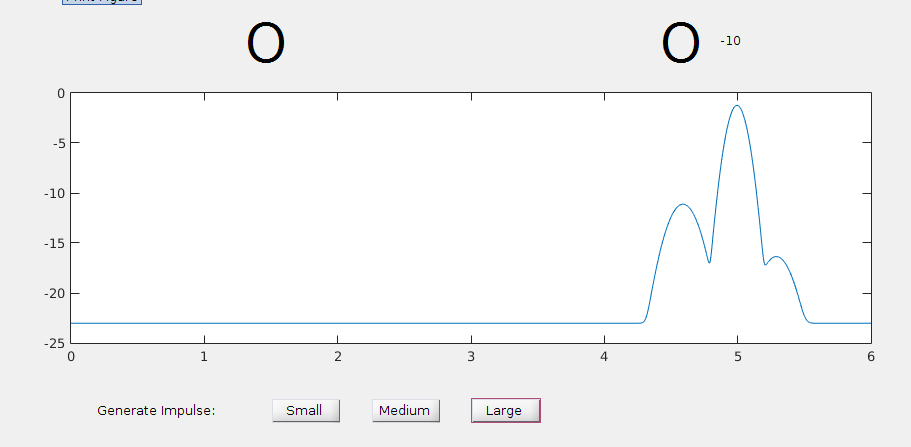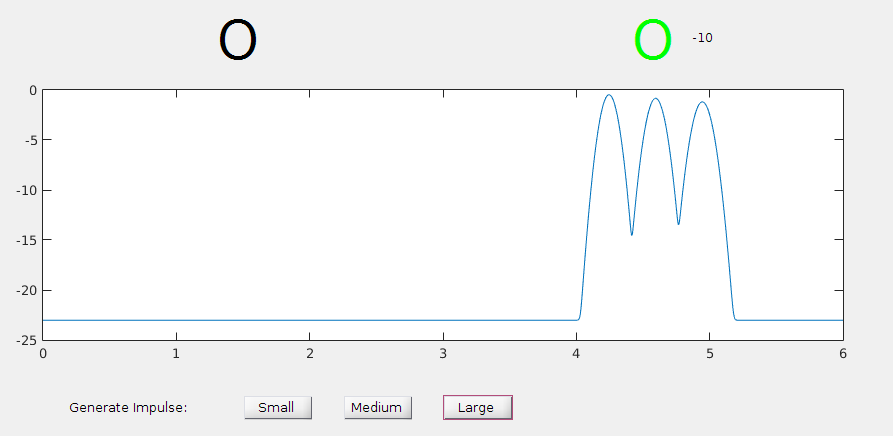

If the circulatory system is viewed as a channel, it is natural to ask - what is its channel capacity? How much information can be sent through this system? Unlike a traditional abstract communication channel, the circulatory system has geometry-dependent properties, because competiting processes such as diffusion and advection occur at different length scales. As such, it becomes critical to specify between which nodes (e.g. organs) we are interested in computing the channel capacity. For our purposes, we will start by determining the channel capacity between the pituitary gland and kindey in the presence of diffusion, advection, and absorption.
Specifically, my goals are to:
Work in Progress:
We may choose to represent the time-sequence of molecules, $$m = {m_0, m_1, m_2 ...}$$ as a sequence of real-valued numbers between 0 and 1, representing a normalized concentration. In turn, the receiving cell maps these molecules as a sequence of signals $$s = {s_0, s_1, s_2 ...}$$ which we can represent as a binary sequence of only 0s and 1s. An intuitive mapping function would be something of the sort \(s = \left \lfloor{x+\frac{1}{2}}\right \rfloor \), but it could take a variety of forms - linear or non-linear, biased or unbiased, time-invariant or even time-varying. We do not concern ourselves with the mapping here, nor do we concern ourselves with how the cell interprets or acts on the signals it receives.
Let us assume that the probability of receiving signals is not time-varying, so let \(p_0\) be the probability that the cell receives signal 0 and \(p_1\) be defined likewise. In this representation, information and entropy take their familiar forms, where information in getting a signal of 0 and 1, respectively, is $$ I_0 = -\log{p_0}, I_1 = -\log{p_1}$$ And the entropy of this system is: $$H(p) = -p_0\log{p_0} -p_1\log{p_1}$$
Taking all of these factors together, we write the master diffusion equation as [XX]: $$ \frac{dc(x,t)}{dt} = D\frac{d^2c(x,t)}{dx^2} - \frac{d (v(x) c(x,t))}{dx} - rc(x,t)$$ Where \(D\) is the diffusion constant for the signaling molecule, \(v(x)\) is the velocity of blood flow, which is assumed to be time-invariant in a particular part of the body (where steady state has been reached), but is potentially varying across the circulatory system, and \(r\) is the removal absorption rate.
Now, this equation cannot be solved analytically. However, we are not interested in the complete solution. We are only interested in the concentration at a particular receiving location, \(c(x_r,t)\) with the initial condition being an impulse concentration (representing a transmitted signal) at x=0 on top of a background steady-state concentration of molecule, which is the result of an equilbrium between the build-up due to released molecules over time and the rate at which molecules are removed by the absorption in the blood vessel walls and major organs. $$ c(x,0) = A\delta(x) + c_0$$ Now, let us consider the three processes separately.
Advection occurs entirely due to transport by the blood vessel. Although the velocity is time-varying, we can write the average velocity between the transmitting node and the receiving node as \(v_{avg}\), which is defined by $$v_{avg} = \frac{\int_0^L{v(x) dx}}{L} $$ Calculatig this average velocity is less important than establishing that an average velocity exists, and that as long as the blood vessels that branch out are identical in length and diameter, then this average velocity can be considered as applying to all of the particles that reach a point \(L\) in the circulatory stystem. The impulse response at point $L$ can be given by: $$ h(x,t) = \delta(x-v_{avg}t,t)$$



